Introduction
The modern business world is driven by giant multinational corporations operating in various regions and affecting different industries. They benefit from the evolution of globalization and technology and multiple opportunities linked to these processes. At the same time, they promote the highly competitive business environment characterized by the need for solid competitive advantage to overcome rivalry and attract customers from different regions. Under these conditions, strategic planning, future expansions, and goals acquire the top priority as elements of success.
Each successful international corporation today has a clear vision that guarantees its success. Sony Group Corporation is one of the leaders in the sphere of consumer and professional electronic products. Its success and the ability to evolve come from the focus on innovative technologies in various spheres, such as games, music, pictures, animation, electronics, imaging, and financial services, and creative approaches, which are viewed as the tools necessary to generate a competitive advantage and attract clients.
Background
Sony Group Corporation (known as Sony, or SONY) is a Japanese multinational conglomerate company. It is headquartered in Tokyo and has multiple offices in all regions of the world (Sony. (n.d.a). At the moment, it is one of the world’s leading manufacturers of electronic products, the biggest video game console company, video game publisher and developer, the largest record company, and a leading media company (Sony, 2013). Furthermore, Sony holds 55% of the market share in the image sensor market, demonstrating its strong positions in the given area (Sony, 2020b). In accordance with the corporation’s financial statement, in 2020, it earned $10.7 billion in net income, which is a 101% increase compared to the previous year (Sony, 2020c). The report also shows that the main divisions that helped to generate this income are games and networks, music, and film (Sony, 2020b). The company forecasts preservation of the high speed of its evolution in the future.
Strategy
The effective and relevant strategy is the central success factor explaining Sony’s ability to succeed and remain competitive. The company accepted a critical decision to focus on electronic products, diversify the number of services and products available to its clients, and meet their demands for quality and creativity (Sony, 2020a). It helped to transform the corporation and create the image of the brand, which promotes innovativeness (Sony, n.d.a). The current Sony’s vision and strategy presuppose getting closer to people, further diversification of business portfolio, creation of value through technologies, and support to people (Sony, n.d.b). The strategy is supported by the following purpose “Fill the world with emotion, through the power of creativity and technology” (Sony, 2020a, p. 05). It means that Sony realizes its power to drive change by creating new technologies and using available resources to support initiatives in this field.
Planned Expansions
The future expansion is the core of Sony’s strategy and its planned development. The report states that new projects and growth are expected in all areas of the company’s functioning. At the moment (1st quarter of 2021), the company gets 30% of revenue from the game and network services, while other ones generate less (see Figure 1) (Sony,2021).
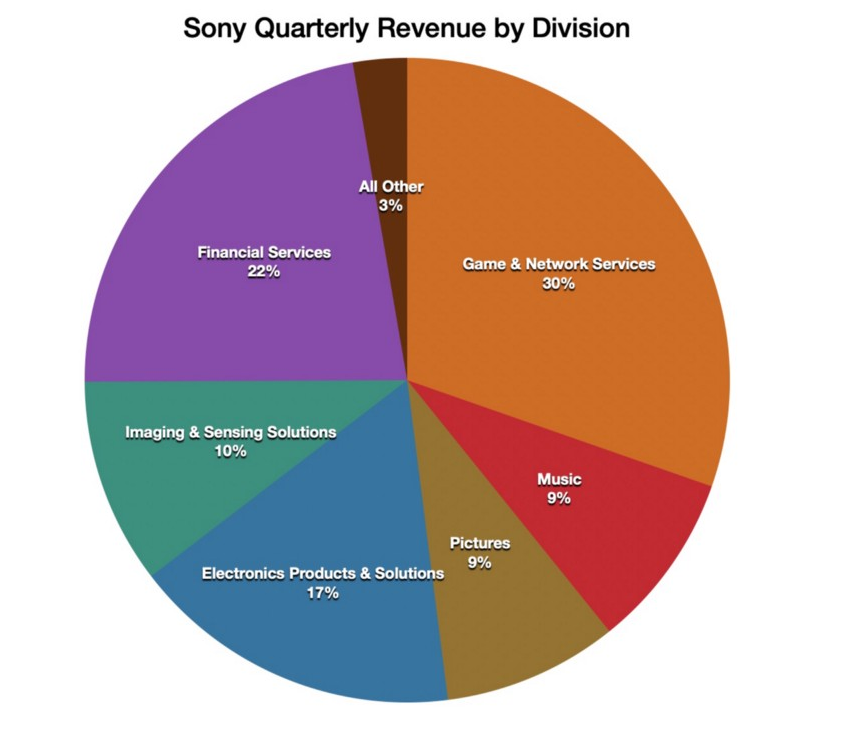
However, the corporation reports the future expansion in all areas as it views multiple benefits linked to launching new projects in segments affected by Sony (Yoshida, 2020b). Its corporate statement emphasizes the need to empower employees, manage and inspire them, to promote positive change in all areas mentioned above (Yoshida, 2020a). For this reason, the corporation invests in all divisions and has detailed plans for their evolution to ensure the basis for its further evolution.
Game and Network Services
As stated previously, this division remains the leading source of revenue, meaning that the planned expansion is significant. Sony (2020a) shows that in 2019, most sales came from digital software, add-on content, and hardware (see Figure 2). For this reason, it plans to work in these spheres to generate additional income. The recent launch of PlayStation 5 has already contributed to the increase in the customer’s interest in Sony’s product (Sony, 2020d). The higher speed, better quality, more complex games, and new experiences ensured by the console attracted clients from all parts of the world and guaranteed a record number of pre-orders (Sony, 2020a). The company plans to continue improving the new cloud streaming game service and Remote Play functionality to help all clients to enjoy a unique gaming experience anytime and anywhere (Sony, 2020d). The focus on expanding this sphere will help to remain one of the leaders as video games are the future of the sphere of entertainment.
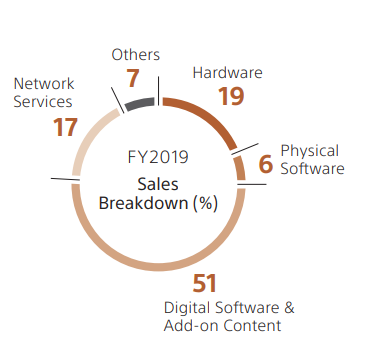
Music
Sony expects that the music division will continue to grow because of several factors. First, the company empowers the music publishing business because of the acquisition of EMI Music Publishing and the focus on the streaming market, which was the central source of sales in 2019 (see Figure 3) (Sony, 2020d). The focus on the further empowerment of streaming services will help Sony to generate additional income and overcome rivalry.
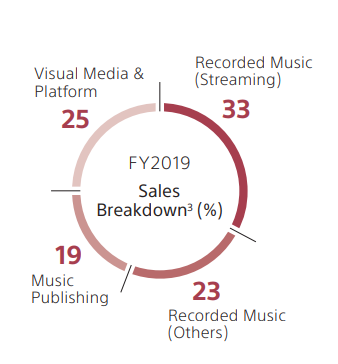
Moreover, in August 2020, the Sony Music Group was established to improve cooperation with clients and become a friendly music company collaborating with various artists (Sony, 2020d). Finally, the company plans new projects in the Japanese music business, which focus on anime, character merchandising, and artist management (Sony, 2020d). It will help to attract a new audience interested in these aspects and support the image of the brand.
Pictures
Motion pictures and television products generate a solid revenue for Sony (see Figure 4). The company benefits from digital distribution and subscription fees (Sony, 2020c). Moreover, the accessibility from various places makes these products more popular among clients. For this reason, it plans to continue expanding this division.
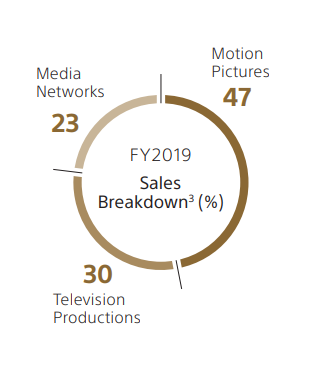
At the moment, Sony invests in developing owned IP and empowering its creative capacity to produce video entertainment for all clients (Sony, 2020d). The corporation monitors the type of content interesting for clients and wants to ensure that clients are interested and can enjoy different genres (Sony, 2020d). For this reason, the cooperation with supply chain partners and exhibitors is planned to attain the desired outcome.
Animation
Animation is another unique area supported by the corporation and helps it to remain competitive. The current plan presupposes that the company will try to deliver Japanese anime to the audience in different parts of the globe through its anime DTC services (Sony, 2020d). Sony also expects that the digital entertainment of China will continue to grow, meaning that there will be a chance for the brand to improve its relations with local companies regarding anime, music, and games (Sony, 2020d). It will provide a solid competitive advantage. Finally, Sony plans to sponsor new creators and studios working in this area to ensure they offer unique and high-quality content to the audience (Sony, 2020d). In such a way, the emphasis on this sector can help the brand to evolve in the future.
Electronics Products and Solutions
The segment of electronics products remains fundamental for Sony. The company acquires main revenues from selling TV services, cameras, and mobile devices (see Figure 5). For this reason, it plans to use this tendency and invest in the given division. The planned change presupposes the focus on devices delivering reality and real-time solutions through sound, video, and communication technologies (Sony, 2020a). It demands additional investment to ensure that people are connected remotely and can benefit from using devices provided by Sony and guaranteeing the high quality of interaction between them. At the same time, Sony plans to manufacture new generations of TV and cameras with better image quality and more real-like pictures (Sony, n.d.b).
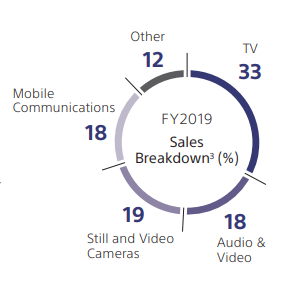
Imaging and Sensing
The primary goal for this sphere is to continue developing image sensors and their accuracy. At the moment, 87% of all sales come from this segment (see Figure 6).
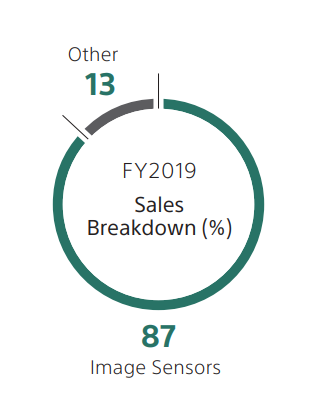
For this reason, Sony plans to maintain its number one position in imaging and sensing (Myers et al., 2019). For this reason, it wants to develop sensing solutions for mobile devices manufactured by the company and automotive sensing technologies supporting people and improving the quality of their lives (Sony, 2020d). In the long-term perspective, the rise of such technologies will create the basis for Sony’s further dominance in the market and its leading roles.
Medical Sphere
Being a manufacturer of high-quality digital devices, Sony also contributes to the development of the medical business. The corporation reports its efforts to help people worldwide by improving existing diagnosing tools and providing health workers with new changes to examine patients (Sony, 2020a). For this reason, the would-be expansion includes imaging, display, and mechatronics technologies vital for medicine as they allow doctors to increase the accuracy of investigations and diagnosing (Sony, 2020d). In such a way, Sony wants to increase its positive role in helping people to improve the quality of their health and attain better outcomes. The provision of such technologies to various partners is another aspect of Sony’s strategic plan.
Financial Services
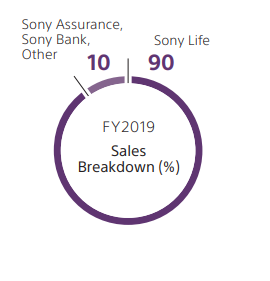
Finally, Sony remains an influential provider of specific financial services to people and wants to preserve its role in this area (Sony, 2020a). Sony Life ensures stable revenue by providing life insurance to clients through in-depth consultations (see Figure 7).
Thus, under a new management team, such initiatives will include additional value generated by new packages and sets of services (Sony, 2020a). The corporation also plans to explore new options resulting from the combination of Sony’s technology and financial services businesses (Sony, 2020a). It will guarantee that clients will be attracted by new offerings and remain satisfied with the high quality of services and results (Kotler et al., 2016; Sony, 2020d). It also means that the financial sphere remains vital for the brand and will be invested.
Sustainability and Innovativeness
Finally, Sony’s plans include the increased attention to communities and the environment. In its sustainability report, the brand outlines steps to address the climate concerns, such as reducing waste, using green technologies, and investing in projects aimed at exploring renewable sources of energy and their integration into the manufacturing process (Sony, 2020e). Furthermore, Sony’s social mission is to help people remain connected and extensive support activities (Sony, 2020e). For this reason, the company launches community projects aimed at helping people in the most problematic societies (Sony, 2020e). The combination of these actions contributes to the improved image of the company.
Moreover, Sony plans to double the number of social projects in the future and cooperate with sustainable partners to avoid harming nature. The corporation is one of the flagships of innovativeness and creativity globally. It is known for encouraging unusual approaches among its employees to find new, more effective solutions to traditional problems (Sony, 2020e). Moreover, its strategic decision to focus on using innovations and technology supported by science helps to generate a competitive advantage and overcome rivalry. For this reason, Sony continues supporting creativity in all spheres where it works.
Conclusion
Altogether, Sony is one of the most powerful multinational corporations in the modern business world. Its power comes from the effective strategy and plans of the company. Correctly realizing the importance of technologies today, Sony focuses on creating the most innovative devices for people to enjoy communication, playing, and entertaining in different parts of the globe. The diversification of products, their quality, and availability to people guarantee the acquisition of a competitive advantage for Sony and its ability to evolve in the future. The company plans to invest in all its divisions to continue expansion and meet new clients’ needs.
References
Kotler, P., Kartajaya, H., & Setiawan, I. (2016). Marketing 4.0: Moving from traditional to digital. Wiley.
Myers, N., Kibler, W., Axtell, A., & Uhl, T. (2019). The Sony smart tennis sensor accurately measures external workload in junior tennis players. International Journal of Sports Science & Coaching, 14(1), 24–31. Web.
Sony. (n.d.a). About Sony. Sony’s purpose & values. Web.
Sony. (n.d.b). Sony Group summary. Web.
Sony. (2013). Annual report 2013. Web.
Sony. (2020a). Corporate report 2020. Web.
Sony. (2020b). Financial statements and consolidated financial results for the fiscal year ended March 31, 2020 and outlook for the fiscal year ending March 31, 2021. Web.
Sony. (2020c). Form 20-F for the fiscal year ended March 31, 2020. Web.
Sony. (2020d). Sony corporate strategy meeting FY2020. Web.
Sony. (2020e). Sustainability report 2020. Web.
Sony. (2021). FY2020 consolidated financial results. Web.
Yoshida, K. (2020a). Corporate strategy meeting. Sony. Web.
Yoshida, K. (2020b). Sony ESG/technology briefing. Web.
